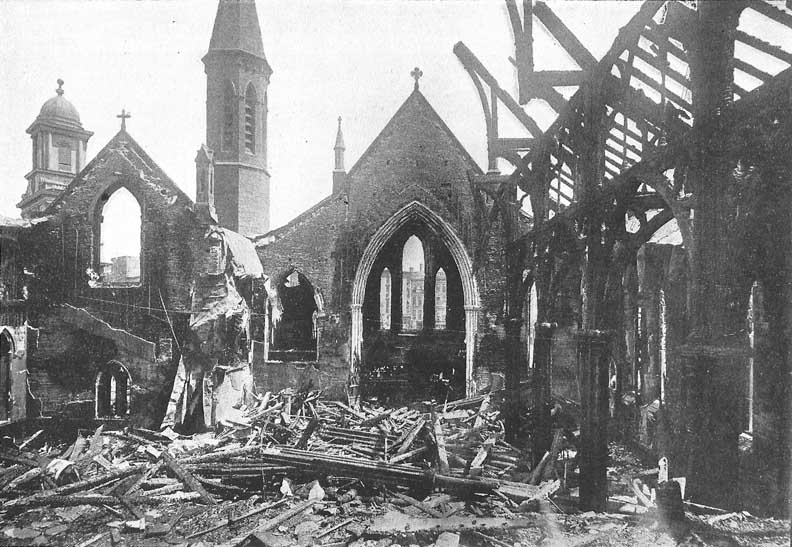St. Paul's - Table of Contents
![]()
St. Paul's - Table of Contents
Illustrated History -
St. Paul's
Episcopal Cathedral
139
Pearl Street, Buffalo, NY
Illustrations - Below dates
Important Dates:
Dr. Israel, Rabbi of Temple Beth Zion, offers the free use of the Temple on Sundays until the church can be rebuilt
Gibson was born in England in 1854. Trained at the Royal Academy of Art in London, he came the United States in 1881 and set up as a practicing architect in Albany.
|
St. Paul's Church on left and "Old First" on right. |
St. Paul's Protestant Episcopal Church as it appeared in 1849 |
Sketch
Site Plan |
St. Paul's before the spires were built in 1870 |
|
"The churches," as they appeared in the early 1880s. |
"Old First" Presbyterian Church on right. |
Erie Street, Terrace Market and Buffalo Harbor. |
An early view of the common in front of the churches (St. Paul's and "Old First"). |
|
Behind St. Paul's: Guaranty Building; |
Shelton Square, named after the Eminent Rev. William Shelton |
Pres. McKinley's funeral cortege passes St. Paul's |
Washington Street Baptist Church (left) |
|
Guaranty Building; |
Rev. William Shelton |
Rev. Dr. Shelton |
|
|
For more information, see History of St. Paul's published by the church |
 1888 fire. Source: "The Picture Book of Earlier Buffalo," Severance, Frank H., ed. Buffalo Historical Society, Vol. 16, 1912, p 115  Source: 1905 Buffalo of Today: Domestic and Industrial  Note fence |
|
Hulberton Sandstone at St. Paul's St. Paul’s would need a lot of stone for the cavernous Gothic revival church in the heart of Buffalo. Henry Streater represented the church and went looking for sandstone. He found it in Hulberton [about 20 miles from Medina, NY]. Streater bought about 3.5 acres at $80 an acre from Samuel Copeland, according to St. Paul’s church records. It was the first quarry in Hulberton. The church opened at 128 Pearl St. in 1851, but wasn’t quite done. The 300-foot-high spire was finished in 1870, and used stone from a different Hulberton quarry owned by Alfred Squire. Although Upjohn, the church designer, initially favored limestone, [Church historian Martha] Neri said the Medina sandstone has proven remarkably durable and was an excellent choice for the cathedral. On May 10, 1888, the church was nearly destroyed by fire. Only the outer Medina sandstone walls and spires remained. ---------- The curved columns in the sanctuary also are made of Medina sandstone. The church has numerous stained-glass windows that are framed by sandstone. The window over the altar, which shows Christ’s ascension, was made by the Henry Holliday and Company of London. The 11 disciples are also depicted. The pulpit was carved from Medina sandstone. - Tom Rivers, Sandstone
Honor Roll: St. Paul’s Cathedral, Buffalo, NY (online June 2013)
|
